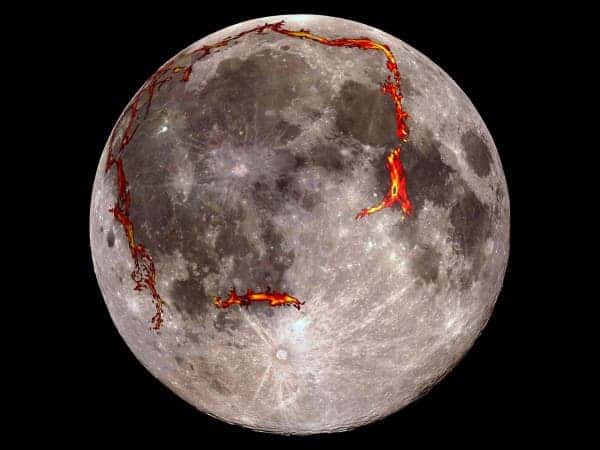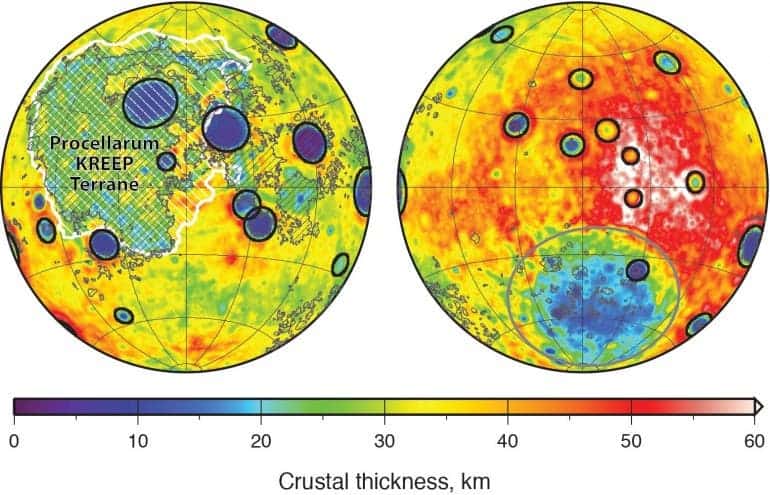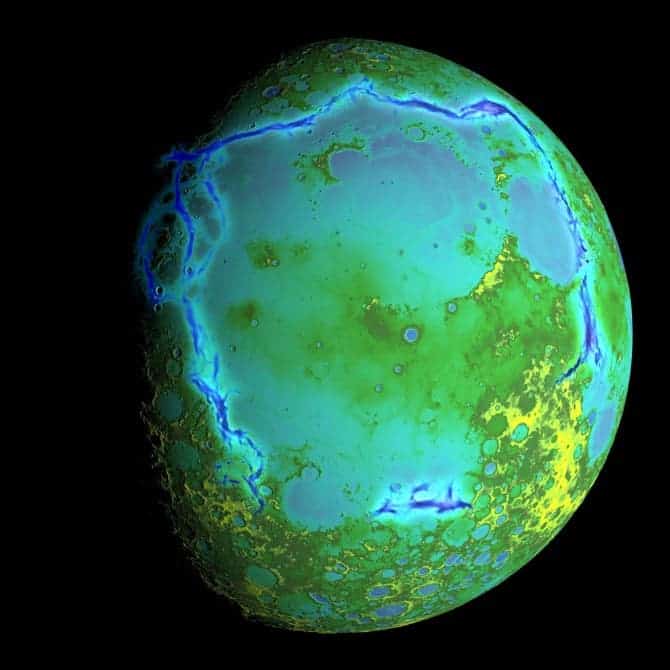Scientists have discovered an almost rectangular feature consisting of ancient magma. The features are similar to rifts here on Earth, a linear zone where the Earth’s crust and lithosphere are being pulled apart. However, since the Moon doesn’t have any plate tectonics to cause rifts, the origin of this magma is still questionable.
Magma on the Moon

Several kilometers below the Moon’s biggest dark spot, Oceanus Procellarum, scientists have discovered a perimeter thought to be the remnants of a geological plumbing system that spilled lava across the moon about 3.5 billion years ago. The existence of such features indicates that early in its history, the satellite was much more active geologically, with significant volcanic and tectonic activity.
“We’re realizing that the early moon was a much more dynamic place than we thought,” says Jeffrey Andrews-Hanna, a planetary scientist at the Colorado School of Mines in Golden and lead author of a new study of the Procellarum’s geology. The discovery also casts doubt on the decades-old theory that the circular Procellarum region is a basin, or giant crater, created when a large asteroid slammed into the moon. “We don’t expect a basin rim to have corners,” Andrews-Hanna says.
Oceanus Procellarum (Latin for “Ocean of Storms”), is a vast lunar mare on the western edge of the near side of Earth’s Moon. Lunar mares were mistaken for actual seas by ancient sky gazers, but we now know that they are in fact large, dark, basaltic plains formed by ancient volcanic eruptions. The maria (plural for mare) cover about 16 percent of the lunar surface, but only Oceanus Procellarum is large enough to be called an “ocean”.
Gravimetric Measurements

These features were revealed by gravimetric measurements using the data gathered by GRAIL (Gravity Recovery and Interior Laboratory). The GRAIL mission also enabled the development of a gravity map of the Moon before being crashed down to the lunar surface. Gravimetry is the measurement of the strength of a gravitational field. The method has been used for many decades on Earth in various projects (finding oil basins, subterranean holes, metallic ore etc).
Much like the devices used on Earth, GRAIL is very sensitive to tiny variations in the Moon’s gravity. Using data gathered by the satellite, researchers can then infer density variations beneath the surface. Below known impact basins, GRAIL found the typically associated ringlike patterns. However, under Procellarum, they observed a mysterious rectangle with heavier density.
“It was a striking pattern that demanded an explanation,” Andrews-Hanna says
Interpreting the results is no easy feat. In a study published today in Nature, the researchers propose that these initial cracks eventually grew into rift valleys, where magma from the moon’s mantle welled up and pushed apart blocks of crust – something completely unrelated to impact basins. The “extra density” is likely caused by magma, which is heavier than the Moon’s crust.
“The discontinuous surface structures that were earlier interpreted as remnants of an impact basin rim are shown in GRAIL data to be a part of this continuous set of border structures in a quasi-rectangular pattern with angular intersections, contrary to the expected circular or elliptical shape of an impact basin”, researchers write in the study.

They propose that the extra weight would have caused the whole region to sink slightly making it look more like a basin. Herbert Frey, a planetary scientist at NASA’s Goddard Space Flight Center in Greenbelt, Maryland is convinced by this study – and excited for future studies on the Moon’s past.
“It just means the moon continues to surprise us,” he says.
Journal Reference: Jeffrey C. Andrews-Hanna, Jonathan Besserer, James W. Head III, Carly J. A. Howett, Walter S. Kiefer, Paul J. Lucey, Patrick J. McGovern, H. Jay Melosh, Gregory A. Neumann, Roger J. Phillips, Paul M. Schenk, David E. Smith, Sean C. Solomon & Maria T. Zuber. Structure and evolution of the lunar Procellarum region as revealed by GRAIL gravity data. Nature 514, 68–71 (02 October 2014) doi:10.1038/nature13697
Was this helpful?



